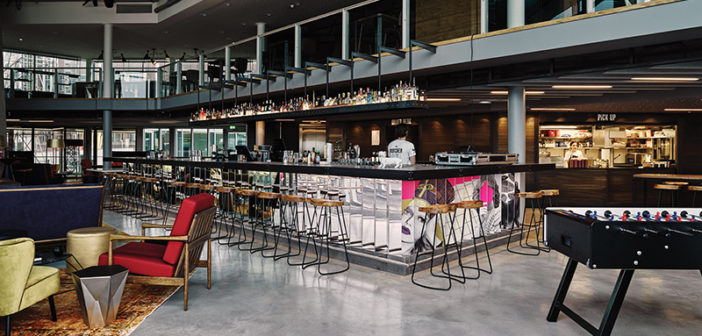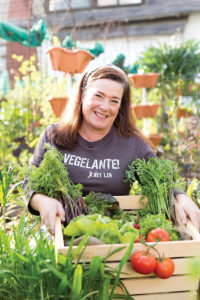NATIONAL REPORT—Food is more than ingredients cooked by flame to be plated and then consumed; it plays a vital role in daily life. Put simply: We live and die by it. Food’s scope of importance is far-reaching. It is about economy, environment, expression and exploration, while providing nourishment to the delight of one’s taste buds.
In hospitality, food also serves as a passport, of sorts, to a new locale, an experience to be shared, savored and remembered—if the dining experience is done right. Tapping into the minds of a food grower, a developer of dining concepts and a restaurant consultant, Hotel Business asked these thought leaders to share what they believe will be the future of F&B in hospitality. All would agree, there is no blueprint to follow but a focus on nuanced dining experiences, technology integration and a “back-to-the-land” approach are helping to lay the groundwork for what the future of F&B is and will become.
Dig into this. In California, The Ranch Malibu has brought on master gardener Geri Miller to run its two-acre, certified organic garden and collaborate with Executive Chef Nina Curtis on culinary experiences—where the produce grown on-site is the star. Eating locally and sustainably has been trending for the past few years, and more hotels are taking advantage of their own resources and those of local farmers to provide food that is fresh, speaks to the destination and becomes part of the brand’s authentic narrative.
“We have 33 raised beds that are quite large, so we’re trying to get the garden back into a very high-yield culinary production garden. Our long-term goal is to get the garden to supply all, or almost all, of the produce she needs,” said Miller. “In the short term, we want to develop a relationship with Nina. It’s a learning curve to have us understand the rhythm of the garden and tie it into the kitchen, timing of menu changes and anticipating and tasting the garden so we meet her needs. We will grow together. We are designing our strategies to match what her needs are.”
Growing food is not new, but there is a renewed consciousness and an awakening among consumers about the positives of homegrown food. There are also the issues stemming from mass food production such as its impact on health, the quality of soil and the use of synthetic chemicals, said Miller.
“It’s not a passing fad at all. The annual National Restaurant Association’s trend list has included hyper-local sourcing and urban farms in its top 10 restaurant trends. It’s a long-term trend for sure,” she said. “The other thing I see being a very important segment of what I do is helping the chefs incorporate more of a global focus to menus. There’s this recognition of how diverse we are, helping chefs put a creative spin to reflect those things and tie their own culture and travel experience into the produce they source or we grow for them. It’s becoming much easier to do that, but it’s also grown to be more important because of menu planning.”
Get charged up. Let’s face it, the power of technology can’t be denied. It has become more pervasive in the hospitality industry, especially in terms of F&B. Using technology to deliver food to guests in hotel environments has the ability to solve an evergreen problem for room service operations, according to Lionel Ohayon, founder and CEO of ICRAVE, an innovation, branding and design studio. The company is at the forefront of delivering cutting-edge, tech-forward dining environments for brands—W Hotels, MGM, Hilton, to name a few.
“If you’re an F&B operator running a restaurant in a hotel, it’s generally a thing that never worked or modeled out correctly to be a positive uptick to revenue and guest experience,” said Ohayon. “What we’re finding is that hotels are complex machines. People are coming and going at different times. There’s the beach, pool and rooftop and a lot of moving parts. With technology in place, you’re able to give customers the control via smartphone to order food in any of the F&B outlets and have it delivered exactly where they are on-property. It changes the understanding of the services of the hotels for guests.”
To create diverse offerings for hospitality, Ohayon explained that it’s about the duplicity of experiences and a sense of discovery to serve different people in different ways.
“It’s this whole notion of things being made on-site or an open kitchen. It’s more about the theater of it. People want to smell and see it happening. By erasing the line between the kitchen and the restaurant, you have a symbiotic relationship,” said Ohayon. “If you speak to the people working in the restaurant, they never get to see the reaction of people tasting the food. By allowing them to be in the same space, there is a positive experience. We talk about how you can create an experience for the people who work there and that, in part, plays to how people make the food and what it tastes like.”
Look beyond food. “Our philosophy is that the two—experiential and holistic—cannot be divorced. It must be both in nature. One cannot exist without the other,” said Dan Kwan, chief creative officer/regional managing director, Americas, Blueplate Studios, the hospitality and F&B concept creation arm of Wilson Associates.
“Hoteliers should heed that the F&B landscape is shifting to an outward focus. Successful F&B concepts are increasingly standalone and embedded in the neighborhoods. They have also become ambassadors of the neighborhoods that they exist in,” he said. “Hoteliers need to acknowledge and embrace this new norm. It’s not a changing landscape anymore—it has changed. Instead of a hotel with a restaurant, it needs to be a hotel and a restaurant, each with their own identity.”
The future of hospitality rests on a bedrock of authenticity, noted Kwan, adding that F&B should be “less smoke and mirrors, more honesty and more local.” He is also seeing a return to basics, with a more residential approach. “There will be smaller menus, an increased focus on quality, specialization will take hold and there will be a one-dish concept, done well. This specialization will also extend to local sourcing, activating local farms and producers, as well as supporting small business and cottage industries,” said Kwan. “I also see ‘no set menu’ concepts. Chefs will use local produce and what is seasonally available to create menus.” HB



